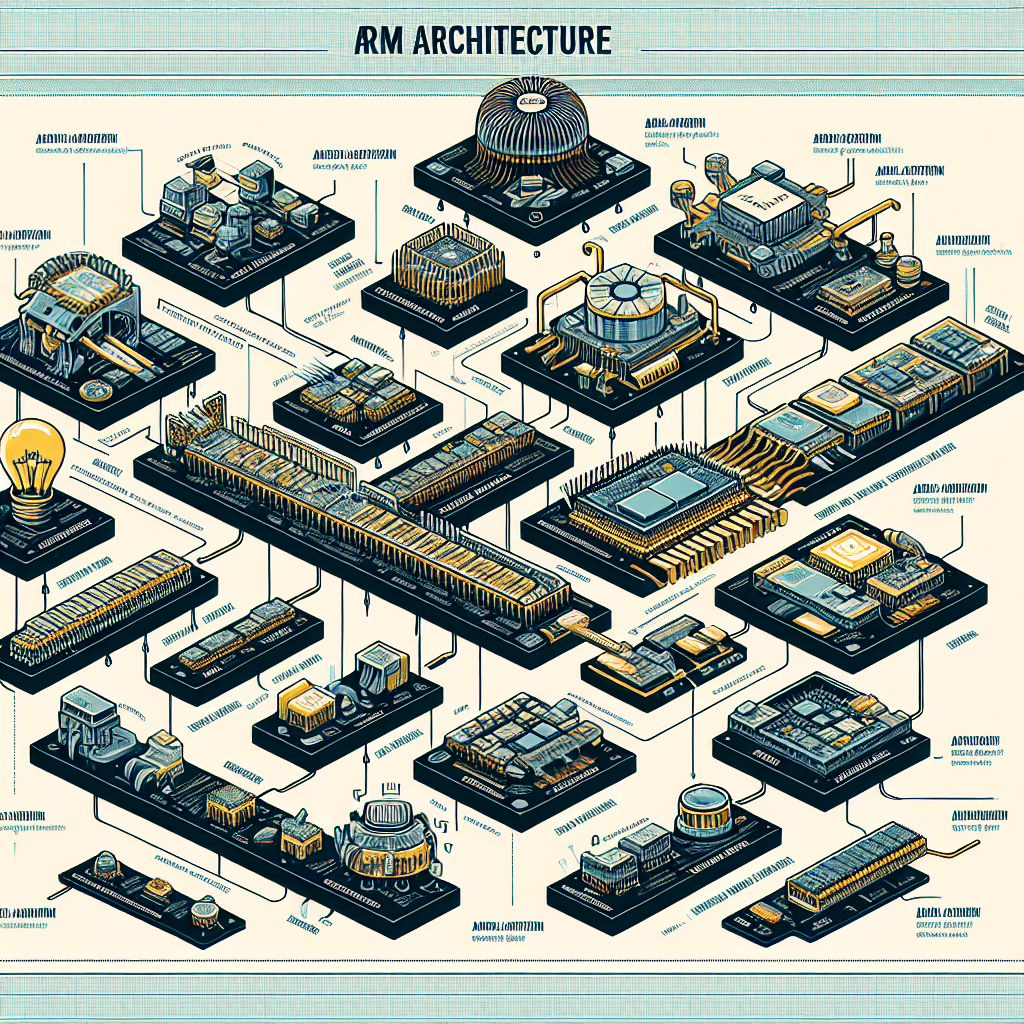Advanced RISC Machines (ARM) architecture has revolutionized the world of computing. From the early days of 16-bit microcontrollers to powering the world’s most powerful supercomputer, ARM has been at the forefront of innovation. This article will provide insights into the basics of ARM architecture, its evolution, and the profound impact it has had on modern tech.
Understanding the Basics of ARM Architecture
In essence, ARM architecture is a Reduced Instruction Set Computing (RISC) architecture for computer processors. It was designed with an approach that allows it to handle fewer instructions, consume less power, and offer better performance. Today, ARM architecture is synonymous with mobile computing due to its power efficiency and high performance. It’s a key player in the world of Internet of Things (IoT), automotive electronics, and embedded systems as well.
ARM processors are based on a load/store architecture where data operations are done on registers, with a uniform fixed-length instruction set. The ARM architecture is designed to be simple, with a smaller number of transistors, which leads to a lower cost, less power consumption, and better heat dissipation. In essence, the ARM architecture revolves around simplicity, energy efficiency, and high performance.
The "ARM" in ARM architecture stands for "Advanced RISC Machines". While there have been multiple versions of the ARM architecture, the most commonly used ones today are ARMv7 and ARMv8. Each version introduces new features and improvements, making each generation of ARM processors more powerful and efficient than the one before.
The Birth and Evolution of ARM Architecture
The story of ARM architecture begins in the 1980s with Acorn Computers Ltd., a British computer company. They developed the first ARM processor, the ARM1, as a part of the BBC Micro project. This humble beginning marked the birth of one of the most influential architectures in the world of computing.
In 1990, Acorn Computers spun off Advanced RISC Machines Ltd., which would later be renamed ARM Ltd. This marked the beginning of the ARM architecture’s journey as a standalone entity. The focus was to license the ARM designs to other companies, which could then build and sell their own chips. This model was unique and unprecedented at the time, but it has proven to be successful and has been emulated by several other tech companies.
Over the years, ARM architecture has evolved drastically. From the early days of 16-bit microcontrollers, ARM has transitioned through 32-bit and 64-bit architectures, introducing multicore processing capabilities, virtualization features, and security enhancements. ARMv8, the latest version of ARM architecture, has even found its way into high-performance computing, powering the world’s fastest supercomputer, Fugaku.
ARM Architecture: Impact and Influence on Modern Tech
ARM architecture’s impact on the modern world is immense. It powers the majority of mobile devices, including smartphones and tablets, and is making significant inroads into servers and even desktops. With its energy-efficient design and high performance, ARM has become the architecture of choice for companies looking for a balance between power and performance.
ARM’s influence extends beyond traditional computing. It’s a key player in the world of the Internet of Things (IoT), where energy efficiency and low heat output are paramount. ARM chips are found in everything from smart home devices to industrial machinery. Additionally, ARM is a major player in automotive electronics, with most modern vehicles containing at least one ARM processor.
Moreover, ARM’s licensing model has had a profound impact on the tech industry. By licensing its designs, ARM has made it possible for companies of all sizes to develop their own custom chips. This has led to a wealth of innovation and has given rise to an entire industry of ARM-based devices, ranging from the smallest microcontrollers to the most powerful supercomputers.
In Retrospect: Summary of ARM Architecture’s Revolutionary Journey
From a simple beginning in the 1980s to becoming a cornerstone of modern computing, the journey of ARM architecture has been nothing short of revolutionary. Its simple, energy-efficient design, combined with its unique licensing model, has disrupted the tech industry and paved the way for countless innovations.
The influence of ARM architecture can be seen everywhere, from the smartphone in your pocket to the car you drive. It has been instrumental in the rise of mobile computing and the Internet of Things, and continues to push the boundaries of what is possible in computing.
ARM’s journey is not yet over. As it continues to innovate and evolve, there is no doubt that ARM will remain at the forefront of the tech industry for many years to come. As we look back on its evolution so far, it’s clear that ARM architecture is a testament to the potential of simplicity, efficiency, and innovation.
ARM architecture has transformed our world by influencing the design and operation of modern tech devices. It’s a story of innovation, perseverance, and a relentless pursuit of efficiency and simplicity. As we look forward to the future, we can expect ARM to continue pushing the boundaries of what’s possible in technology. The journey of ARM is a clear reminder that the power of innovation can change the world in unimaginable ways.











